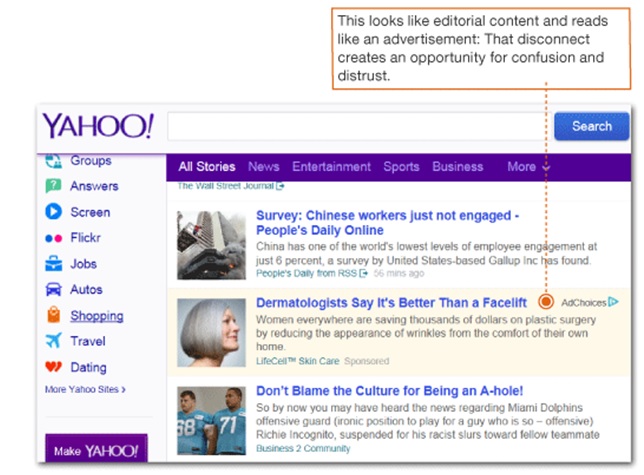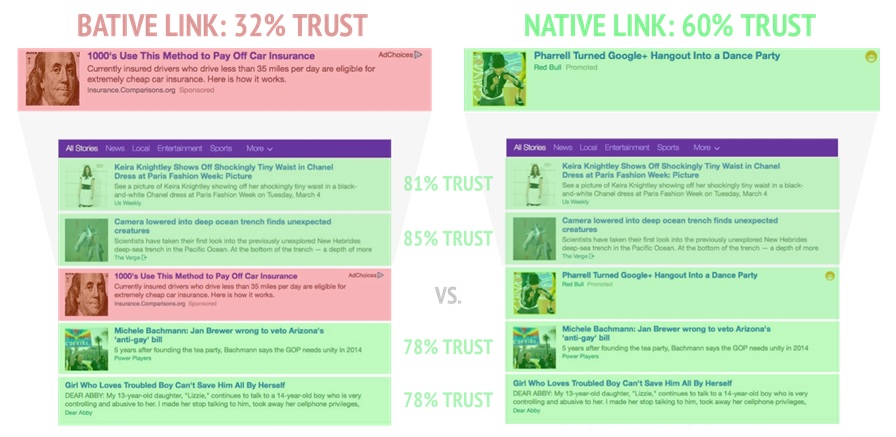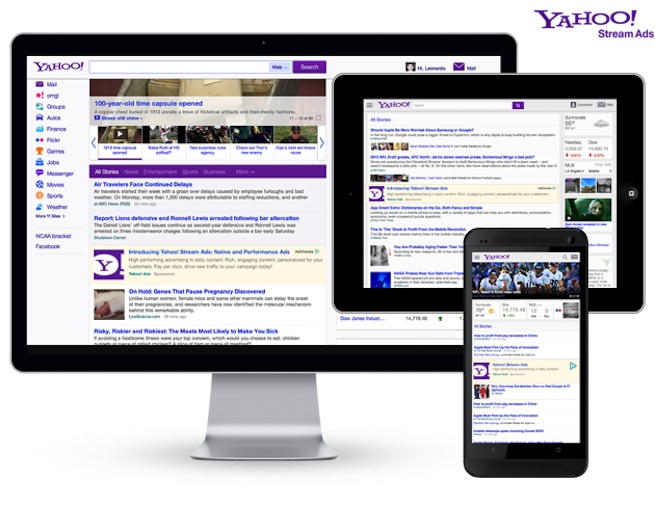Want smarter insights in your inbox? Sign up for our weekly newsletters to get only what matters to enterprise AI, data, and security leaders. Subscribe Now
In a race to offer native advertising to brands, some publishers and platforms are masquerading banner ads as native ads. This so-called content marketing solution betrays consumer trust and puts the reader-to-publisher ecosystem at risk.
Take for example, Yahoo. A recent WSJ piece identified two contradictory trends in Yahoo’s advertising business that have implications for the native advertising industry as a whole. The story stated that while Yahoo’s native advertising business has grown to become 40% of non-search revenues, it still faces challenges in attracting premium brands.

Without the support of big, premium brands, how did this particular platform’s native ad profit accelerate so quickly? Its native ads aren’t really native, meaning they aren’t trustworthy to an audience. And premium brands know to avoid advertising that results in mistrust and confusion amongst their customers. This week Yahoo announced its native ads will be available on outside publisher pages, including: SB Nation, GameSpot and TV Guide.
Let’s take a step back. By definition, native advertising is “a form of paid media where the ad experience follows the natural form and function of the user experience.” This definition requires a native ad to adhere to two non-negotiable elements:
- Form – the ad has to fit the surrounding environment’s design.
- Function – the ad’s content must fit the surrounding environment’s content.
Unfortunately, too many platforms still offer native ads that ignore the second requirement. Native ads may resemble the site that surrounds them, but the content of the ad itself is just direct-response advertising in disguise. We call those click bait-y ads, “bative” ads. “[Bative ads] look like editorial content and read like an advertisement: That disconnect creates an opportunity for confusion and distrust,” Forrester Research notes.

Trust is the currency of publishing. If a publisher loses trust, soon to follow are audience engagement, audience loyalty, and ultimately advertising dollars. But don’t take my word for it. Outbrain decided to run a survey, specific to Yahoo’s native advertising situation, to see if this hypothesis was true.
We asked over 300 respondents to indicate whether they trust or distrust different parts of the Yahoo homepage. While around 80% of respondents trusted Yahoo’s editorial links, only 32% trusted its bative ads, similar to the trust in display ads that ran from 24% to 34%.

In order to get a benchmark of what would happen if Yahoo used authentic and informative branded content instead of bative ads, we replaced the car insurance ad with a real article from Red Bull. In this case trust rose to 60%. What does this mean for publishers? Leveraging branded content, as opposed to bative ads, can practically double the percentage of audience trust.
The survey also looked at whether or not Yahoo’s bative ads impact users’ trust of the Yahoo homepage as a whole. While 83% trust Yahoo’s editorial feed featuring the Red Bull native link, 74% trust the editorial feed with the bative links.
Native advertising has been hailed as the future of publisher monetization and Yahoo showed it could scale it fast. The question is whether this scale is sustainable if user experience and trust are degraded. Squeezing the lemon by using those high-yielding direct-response ads masqueraded as content could lead to the end of native advertising, just like these types of ads have led to dismal engagement with display advertising.
Native advertising is still a relatively new concept. As such, there aren’t metrics or tried-and-true standards available. But, developed thoughtfully and authentically, native advertising can help brands promote premium content in a visually appealing way. Sticking to legitimate native advertising might not scale as fast as bative ads, but it will give audiences value, maintain their trust, and be sustainable for the long run.
Matt Crenshaw is VP of product marketing at Outbrain. He was previously president of Mother Nature Networks and, prior to that, held senior marketing positions for the Discovery Networks.


